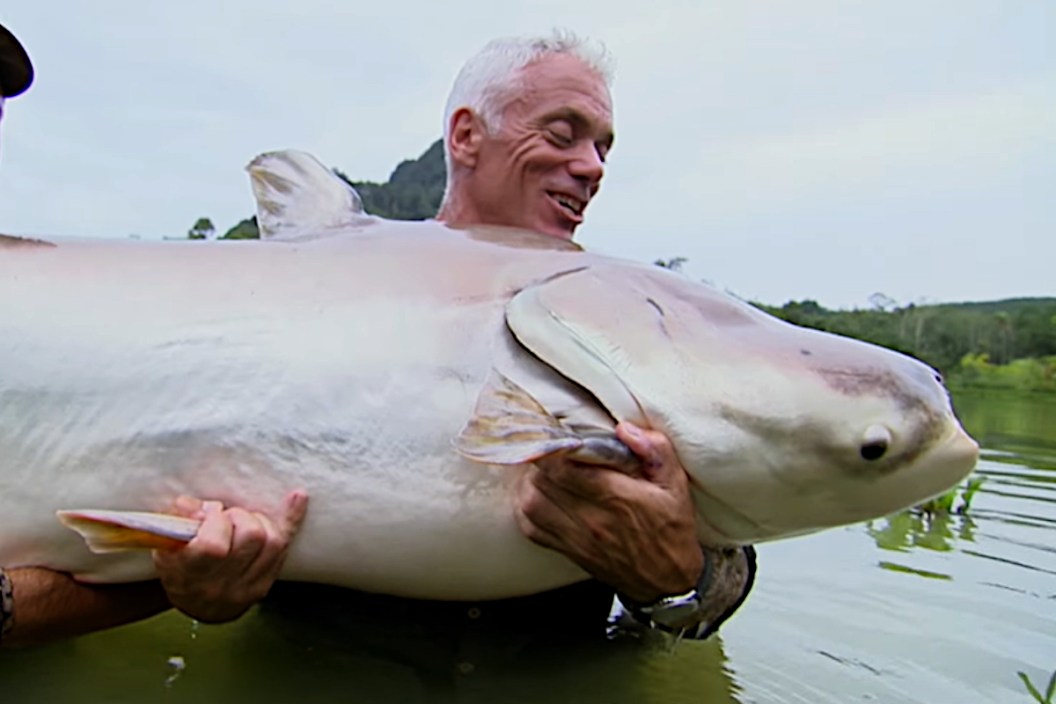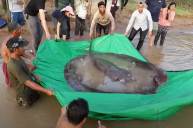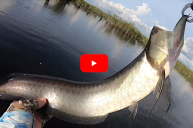Here is a brief life history of the incredible Mekong giant catfish.
As freshwater fish go, the 3,000 catfish species practically outnumber all others on the planet. But when it comes right down to it, some of those species aren't doing so well and the Mekong giant catfish may just top the list.
This native of the Mekong River basin in Southeast Asia is actually a member of the shark catfish family, a species that includes the plant eating and endangered Mekong giant catfish.
Interestingly enough, this catfish species is one of the fastest growing fish in nature, attaining sizes of up to 400 pounds in just six short years. Unfortunately, between declining habit and overfishing, the giant of the mekong may not survive much longer.
Mekong River
The Mekong River is one of the world's longest rivers and the sixth longest in Asia. It runs through parts of China, Myanmar, Laos, Thailand, Cambodia, and Vietnam before it discharges into the South China Sea.
Between the extreme seasonal variations, flow, and the presence of rapids and waterfalls, navigation can be extreme and quite difficult. The Mekong River is still considered a major trade route between cities in western China and Southeast Asia to this day.
According to the Mekong River Commission, the aquatic biodiversity in the Mekong River system is ranked as the second highest on earth, only after the incredible Amazon. It also states that "The commercially valuable fish species in the Mekong are generally divided between "black fish", which inhabit low oxygen, slow moving, shallow waters, and "white fish", which inhabit well oxygenated, fast moving, deeper waters."
Mekong Giant Catfish
This monster fish (Pangasianodon gigas) is at the heart of a river system that has seen species like this sometime thrive, and at other times become listed as critically endangered. It was at one time found along most of the river's entire course from Vietnam to China, but now is said to inhabit only the lower Mekong River. Unfortunately, due to pollution and specifically dams that are now blocking their migration routes, some 80 percent of the Mekong giant catfish population is now gone from the river basin.
In 2005, a record breaking monster was caught where the Mekong River flows through Thailand. The giant catfish was nearly nine feet long and weighed in at an insane 646 pounds. Those catfish that do survive to adulthood have an astounding growth rate becoming nearly that large in just a short five or six years.
One good thing is that researchers know some of the fish's life history. We now know the Mekong River Catfish need to migrate long distances each year in search of their very specific spawning grounds. During the start of rainy season, the fish gather together and then head upstream to spawn, typically around six years of age.
The Mekong River catfish is said to be one of the largest freshwater fishes in the world, and quite possibly the largest of all the catfish species. Interestingly, adult Mekong River giant catfish are whiskerless, losing their famed barbels as they grow.
For fishermen it must be said that this particular catfish species is actually a toothless herbivore which lives on the plants and algae in the river, not the fish or bait eating variety that we all know.
Conservation Efforts
Each year, these fish are now caught and bred in captivity to be released into the wild at a later time. This is in the hope that future populations can be grown and eventually become viable. There has also been an increase in the patrol and crackdown of certain areas. Simply to deter poaching attempts and ensure that wild catfish can reach that critical breeding age.
Fishing for the Mekong giant catfish in Thailand, Laos, and Cambodia has now been deemed illegal, but angling for these giants goes on. Not only that, but in some of these areas, the Mekong giant catfish is considered sacred, and locals celebrate catching the fish with large ceremonies.
As fisheries go, it isn't exactly what we would call one to be proud of, but for those who reside in the Mekong basin it is endemic of their culture as much as fishing for largemouth bass in North America is to us.
And maybe one of the greatest reasons why we have seasons and bag limits that everyone abides by.
This IUCN red list species of catfish is the subject of some of the most extensive research projects and breeding programs of any giant fish out there. The ecology of this endangered species is now being carefully watched by the World Wildlife Fund (WWF) to decrease damming and habitat loss in the effort to create an ecosystem that can carry these giant fish into the future.
Products featured on Wide Open Spaces are independently selected by our editors. However, when you buy something through our links, we may earn a commission.
Looking for a new way to display those antler sheds? Go to Rack Hub and use the coupon code Craiger. Be sure to follow my webpage, or on Facebook and YouTube.
NEXT: FISHING GEAR FOR CATFISH THAT YOU'LL WANT ON HAND
WATCH





